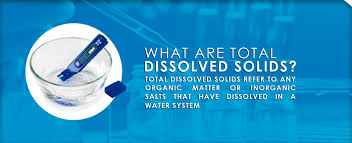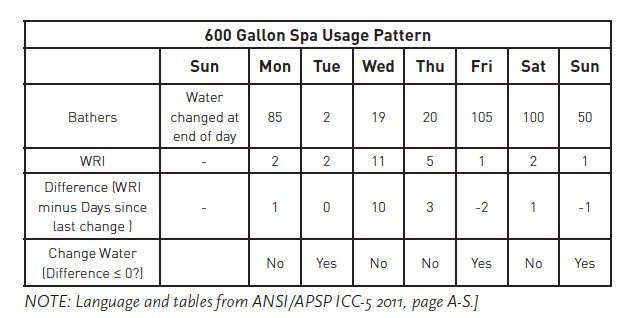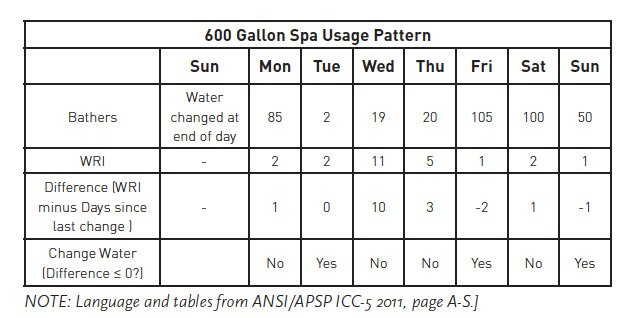
02/09/2021 by Gary 0 Comments
Total Dissolved Solids-The Facts
What is T.D.S. and why should we care
As pool professionals we are always looking for resources to explain the, sometimes abstract concepts of a complete story on the health of your pool or spa. TDS is one of those vague chemistry concepts that can be hard to explain. Fortunately I have come across this very good article on the subject from AquaMagazine https://aquamagazine.com and APSP Recreational Water Quality Committee (RWQC) January 2019 which follows here.
Total Dissolved Solids
T.D.S.play quite a significant role in water chemistry. While pH, total alkalinity and calcium hardness levels usually receive more attention, TDS should not be overlooked. In fact, with increased popularity of electrolytic chlorine generators, as well as drought conditions in many parts of the U.S. restricting the draining of pools, TDS levels have been steadily climbing throughout the country. With that in mind, it is more important than ever to understand what total dissolved solids are and how they work.
WHAT IS TDS?
First, a quick definition: TDS is the total of all dissolved solid matter such as minerals, metals, salts and contaminants in the water.
TDS levels are often determined with a conductivity meter, which measure the water's ability to conduct an electric current. The greater the concentration of charged particles (to include both positive and negative ions), the more freely electric current can flow through the water. TDS levels can also be measured via test kits and test strips.
It is important to note that while testing methods measure charged particles in the water, true TDS also includes non-charged contaminants such as oils, lotions, cosmetics and other swimmer waste. Other tests will provide better information about organic contaminants in pools and spas, but are much more costly and time consuming to perform in comparison to the simple conductivity test.
In residential pools and spas, TDS testing should be performed monthly. In commercial pools, spas and water features, testing should be performed several times a month as necessary.
TDS AND THE LANGELIER SATURATION INDEX
Rising TDS levels have traditionally been used as an indicator of the accumulation of contaminants in the pool or spa water.
Contamination may take the form of unoxidized or partially oxidized pollutants and include nitrogenous products from swimmer's waste. TDS concentration increases over time as dissolved materials are added to water from source or fill water, pool treatment chemicals, swimmer waste and environmental contaminants. Evaporation also increases TDS, as water evaporates leaving behind more concentrated dissolved solids.
Of the different water balance indices currently used in the pool industry to help predict the scale forming or corrosive tendencies of pool and spa water, the major index utilized today is the Langlier Saturation Index.
The LSI is a mathematical/chemical formula that considers five factors or properties of pool/ spa water, including pH, bicarbonate/carbonate alkalinity, calcium hardness, temperature and TDS. In traditional LSI calculations, carbonate alkalinity, calcium hardness and temperature levels were assigned numerical factors while the TDS content was assigned a constant of 12.1, which reflected TDS levels from 0 ppm to 1,000 ppm.
How to lengthen the life of you spa
Historically, the LSI was developed for use with closed systems, like pipelines, wherein the water balance remained relatively fixed for a given body of water. The system was later applied to swimming pools.
Initially, TDS was easily controlled by draining pools when levels were too high. However, this solution is not always practical for open pool systems, as TDS levels can climb because of several factors like added pool chemicals, evaporation, new replacement water and reactions with the atmosphere, to name a few. The concept of trying to provide a better arithmetic formula to protect tile grout, equipment and plaster surfaces resulted in adding the LSI TDS constant of 12.2 for the 1,000-20,00 ppm range.
For years, a level of 3,000 ppm was considered the maximum allowable TDS for pools. That began to change in the early 1990s when ECGs became more prevalent; the sodium chloride (salt) introduced into these pools causes TDS levels to exceed the 3,000 ppm range. By the early 2000s, the NSPI (now APSP) adopted the additional TDS constant of 12.3 for levels from 2,000-3,000 ppm. These TDS constants or factors were updated by APSP again in 2009 to cover TDS ranges from 0 ppm up to 5,000 ppm.
APPLICATION AND USE OF TDS DATA
The recommended maximum allowable TDS for pools and spas is 1,500 ppm greater than TDS at initial pool or spa startup. Startup TDS includes balanced water TDS as well as salt (sodium chloride) added at startup.
This maximum allowable level can be used to prevent issues associated with aging pool/spa water, such as:
1. Reduced efficiency of disinfection/ sanitizing chemicals due to elevated organic contaminants
2. Corrosion of fixtures as TDS increases due to the greater conductivity of the water
3. Surface staining and/or etching that can result from elevated TDS
Exceeding the maximum recommended TDS level may indicate the need to partially or completely drain water. (Provided drought conditions or other prohibitions against draining are not in effect.)
For spas, TDS can be used to calculate the water replacement interval (WRI) or determine when the spa needs to be completely drained if either of the following conditions are met:
1. TDS in the spa exceeds the source water TDS by 1,500 ppm or more
or
2. The water replacement interval is less than or equal to the number of days since the last time the water was drained. WRI is calculated as shown in the formula and examples below:
WRI = (0.33) (Spa volume in gallons ÷ (Maximum # of bathers per day since last change)
EXAMPLE 1:
The TDS of the original source water was measured and recorded to be 800 ppm. The TDS of the spa water now reads 2,500 ppm. The difference is greater than 1,500 ppm (2,500 ppm - 800 ppm = 1,700 ppm). Therefore, the spa should be drained immediately.
EXAMPLE 2:
Consider a 600-gallon spa last drained and refilled on Sunday evening, with the usage pattern outlined in the table below:
Use the TDS numerical value to obtain the correct LSI factor to properly calculate the Langelier Saturation Index.
For elevated TDS levels, such as with pools and spas with salt chlorine generators, use the following table:
Use the reading closest to your actual reading in choosing the factor.
PRECAUTIONS
Although there is not a minimum level in ANSI/APSP standards, source water TDS should always be checked before start-up of new pools, spas and water features. Low TDS may be indicative of low calcium hardness and/or low total alkalinity levels that may produce corrosive conditions that could affect tile grout, surfaces and equipment. High or elevated TDS levels (which include elevated sodium chloride levels) can:
Indicate high organic contamination, which can influence the consumption of the sanitizer and its ability to properly disinfect and oxidize the pool or spa water. That in turn can lead to swimmer or bather safety concerns.
Increase the conductivity of the water, which may lead to possible corrosion of fixtures, lights and equipment, especially if any stray voltage is present in the water.
Damage some ECGs, which should be monitored to prevent problems. Consult the ECG manufacturer to determine at what point high TDS can cause problems.
Lead to corrosion. As has been known for years in industrial water treatment, the high mineral content of water increases the conductivity of water and thus possible corrosion if other factors favor corrosion.
Water Balance indexes
Increase the solubility of calcium carbonate and other calcium compounds. As has been known for years in industrial water treatment, high mineral content in water increases the conductivity of water, and can thus lead possible corrosion if other factors favor corrosion. With elevated TDS and salt (NaCl) levels, there is an increase in ionic strength as salt and TDS concentrations increase. For cementitious interior finishes, this increase in the solubility of calcium components of the plaster and other cement-based surfaces can be offset/managed by adjustment of the other LSI water chemistry parameters (pH, total alkalinity, calcium hardness and temperature) and use of the LSI to prevent corrosive conditions. This must include the correct factor for elevated TDS levels.
Cause problems with masonry materials used in pool/spa decks. Both natural and man-made products subjected to frequent wet/dry cycles with water containing high TDS can experience deterioration of these materials. Always consult with the installer/contractor to confirm the compatibility of these materials to be placed on and around pools/spas with elevated TDS and salt levels.
CONCLUSIONS
With the increased popularity of ECGs, as well as growing water restrictions, many pools, spas and water features are running TDS levels in excess of 3,000 ppm. With this increase in TDS must come a heightened awareness of the potential problems associated with these elevated levels. Concerns with issues ranging from hazy "tired" water, improper LSI water balances, surface staining, decreased sanitizer efficiency, and deterioration of equipment must all be considered with performing a regimen of care to any pool, spa, or water feature. The simplest remedy to these problems is often to perform a partial or complete drain of a vessel and replace with fresh water that has a lower TDS content."
Billabong Pool Service and Supply hope you gained some perspective that complete swimming pool water chemistry story is not so cut and dry and producing the perfect pool water has many facets.
Thanks again to Aqua Magazine https://aquamagazine.com and APSP Recreational Water Quality Committee (RWQC) January 2019 for their informative article.





Comments
Leave a comment